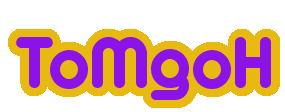After 2 years in relative obscurity, the much hyped collaboration platform, Google Wave has decided to close it's doors for good. What started out as an invitation-only model, which of course peaked curiosity and buzz about it, later died into just murmurs in the vastness that is the internet. What was easily one of the most anticipated and talked about things in 2009, even after dropping the invite only status failed to gain a favourable adoption rate.
The problem that most people had with Google Wave was they didn't know what to do with it. The idea of a collaborative environment where you could see what was being typed in real time as well as share media was exciting yes, but in theory the execution was just too bulky and detached from your usual accounts to be viable for daily use. That being said, look at Google Buzz. Does anyone actually use it?
Anyway, good luck to Google on their next thing in the big bad world of social media.
--
Taken From The Google Blog (8/04/2010 02:00:00 PM )
We have always pursued innovative projects because we want to drive breakthroughs in computer science that dramatically improve our users’ lives. Last year at Google I/O, when we launched our developer preview of Google Wave, a web app for real time communication and collaboration, it set a high bar for what was possible in a web browser. We showed character-by-character live typing, and the ability to drag-and-drop files from the desktop, even "playback” the history of changes—all within a browser. Developers in the audience stood and cheered. Some even waved their laptops.
We were equally jazzed about Google Wave internally, even though we weren’t quite sure how users would respond to this radically different kind of communication. The use cases we’ve seen show the power of this technology: sharing images and other media in real time; improving spell-checking by understanding not just an individual word, but also the context of each word; and enabling third-party developers to build new tools like consumer gadgets for travel, or robots to check code.
But despite these wins, and numerous loyal fans, Wave has not seen the user adoption we would have liked. We don’t plan to continue developing Wave as a standalone product, but we will maintain the site at least through the end of the year and extend the technology for use in other Google projects. The central parts of the code, as well as the protocols that have driven many of Wave’s innovations, like drag-and-drop and character-by-character live typing, are already available as open source, so customers and partners can continue the innovation we began. In addition, we will work on tools so that users can easily "liberate” their content from Wave.
Wave has taught us a lot, and we are proud of the team for the ways in which they have pushed the boundaries of computer science. We are excited about what they will develop next as we continue to create innovations with the potential to advance technology and the wider web.





